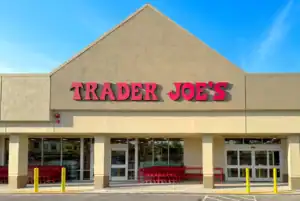
Illustration: Getty Images
March 13, 2023
Will retail media networks live up to the hype?
Through a special arrangement, presented here for discussion is an excerpt of a current article from the blog of Nikki Baird, VP of strategy at Aptos. The article first appeared on Forbes.com.
With access to their customers’ purchase data and the ability to put brands in front of consumers right when they’re most willing to be influenced, retail media networks (RMNs) are not unsurprisingly growing like gangbusters.
The fast-track growth does face a few hurdles, however:
- Trade funds exchange: A Wakefield Research survey of consumer packaged goods (CPG) brands found 64 percent planning to increase their RMN spending in 2023, yet most are not spending incremental money on RMNs. Where does the money come from? Trade funds.
- The elephant in the room – Amazon: eMarketer estimates that in 2022 Amazon achieved a 76.9 percent share of retail digital media with faster growth than other major RMNs. Traditional (brick and mortar) retailers can fight back with their in-store and digital access offers, although it’s going to be an uphill climb. Piecing together shopper activity across online and stores is challenging enough to leverage internally.
- The upper limit of advertising inventory: According to Forrester’s “CMO Pulse Survey,” 45 percent of advertisers say their biggest RMN challenge is the number of RMNs they have to manage. Forty percent say it’s comparing the performance across RMNs. There is a finite market of retail media sites until someone figures out aggregation.
- The upper limit of advertisers: In the Wakefield survey, 53 percent of CPG brands were using RMNs before 2019, but only 11 percent planned to start in the future. RMNs will also only be good for brands carried by retailers.
- The upper limit of consumer receptivity: Offers served through RMNs are not personalized — they’re targeted. Serving an ad to someone who will never buy the product is annoying.
- An upper limit to the funnel: Wakefield’s study found two-thirds of CPG brands citing driving conversion as the most important objective of RMNs. Are messages around brand awareness relevant at RMNs’ stage of the purchase journey?
- Abuse: The Association of National Advertisers’ recently-published survey found 88 percent of CPG respondents feel somewhat or heavily influenced by retailers to advertise on their networks, with 42 percent questioning their value.
RMNs have value. But they need to be considered in the context of what they can do, not what everyone wishes they would do.
-
Retail Media Networks Are Having A Moment But It Won’t Last — Forbes
-
Wakefield - Specificity & Scale: The Future of RMNs Means Providing Both – Wakefield Research
-
What you need to know about retail media in 5 charts – eMarketer/Inside Intelligence
-
Retail Media Networks Are The Next Big Advertising Channel — Forbes
Discussion Questions
DISCUSSION QUESTIONS: Do you see the robust growth of retail media networks soon hitting a wall? Where do you see the most significant potential hurdles facing retailers as they seek to develop and scale their digital ad networks?
Poll
BrainTrust
David Spear
President, Retail, OrderlyMeds
Jamie Tenser
Retail Tech Marketing Strategist | B2B Expert Storytelling™ Guru | President, VSN Media LLC
Ken Morris
Managing Partner Cambridge Retail Advisors
Recent Discussions







RMNs’ growth trend will continue in 2023, but I do think it will start to slow in 2024, primarily due to saturation and natural market forces. Nikki does a great job spotlighting some of the key challenges, and another one is return on ad spend (ROAS). Just because a retailer stands up an RMN of their own, doesn’t equate to eye-popping ROI. In the end, those RMNs that offer better than average ROAS will win the day and those that don’t will soon fade.
Let’s recognize RMNs are a new way. A new way, yes, but in reality another way to squeeze trade funds out of the CPGs. Their success will not depend on what they deliver for the retailer but on what they deliver for the vendor.
Trade funds are finite for the brands. The places to spend them are infinite for the retailer.
Despite the limitations, RMN is and will be irresistible to retailers. Where else can they add another revenue stream with margins of 50 to 70 percent? The danger to retailers is twofold: the real estate they’re giving to advertisers on their sites and social channels, and the first-party data they’re giving up to potential competitors and brands that are learning to go direct to consumer. So, the survivability of RMNs is directly proportional to the quality of the data shared. It’s a great idea, but every retailer could have their spin on RMNs, and that might make this a media management nightmare. That being said, the potential is enormous and worth the investment. The profit potential for retailers from this is huge.
I’m more bullish on the potential for retail media (a.k.a. “commerce media”) but I concur with many of Ms. Baird’s observations.
I look at RMNs as a business play for large retailers, but all retailers have a stake in making their “audiences” (i.e. shoppers) more reachable to brands. There is a disparity however, since strong regional chains have trouble delivering audiences for national advertisers individually.
Now that the early excitement around alternative revenues is peaking, we can anticipate innovation in media buying platforms for brands. Instead of assembling pieces of their audiences across multiple RMNs, they will look for one-stop shopping with built-in performance metrics. In this scenario, the strong regional retailers will have a way to play based on audience quality rather than sheer scale.
If marketing dollars are merely shifted from trade budgets into commerce media budgets then retailers gain nothing while adding great complexity. That is not now and has never been the goal. But many brands now see the wisdom of shifting some traditional advertising funds (which lack direct accountability) into measurable retail media that are more efficient and able to deliver proof of activation.
Savvy brands can combine on-site/in-app, off-site (e.g. social), and in-store messaging to achieve both branding goals and conversion. Savvy retailers will continue to make the case for maintaining trade marketing investments in parallel with commerce marketing activities.
Retailers are getting into the digital advertising business at a furious pace. Leading retail media networks—Amazon Ads, Best Buy Ads, Costco Wholesale, eBay Ads, The Home Depot Retail Media+, Instacart Ads, Kroger Precision Marketing, Macy’s Media Network, Roundel (Target), Walmart Connect, Wayfair Media Solutions and Triangle Retail Media( Canadian Tire). Top 5 reasons attributed to the success of RMN are (1) traffic(2)first-party data(3)targeting and measurement, (4) platform experience and (5)Return on ad spend (ROAS).
“Extremely important” attributes for RMN company future are – Traffic quality, traffic scale and in-store/omnichannel sales data.
I see a strong future for RMNs, however, there are many truths to what Nikki Baird highlights. The high degree of growth becomes harder as the media networks mature. Plus, there isn’t room for every retailer to be equally successful with their RMNs because the dollars allocated by brands for these have to come from somewhere. Yes, much of this is from trade funds, but much of this will also be dollars displaced from other advertising venues – especially traditional ad outlets.
I have a different view regarding the elephant in the room. RMNs as a whole are not a zero-sum game, so a retailers objective is not to take market share from Amazon, who is the clear revenue and growth leader in this space today. The goal is simply to grow your alternative revenue, high-margin, source as much as you can by connecting the dots on all potential ad unites you can offer – e-commerce, in-store, and external outlets. In fact, the real winners in RMNs will be those that can deliver a complete ROAS picture to brands across multiple ad outlets. A great recent example that illustrates this is Movado leveraging RMNs with Connected TVs (CTV). Amazon appears to be leading the way here as well, so there is still much to be done by other RMNs.
Lastly, there is a real challenge for brands with the number of RMNs they may need to work with. There is a real opportunity for aggregation services here that simplifies the complexity for brands and helps with reporting and ROAS. There are already solutions emerging to address this!